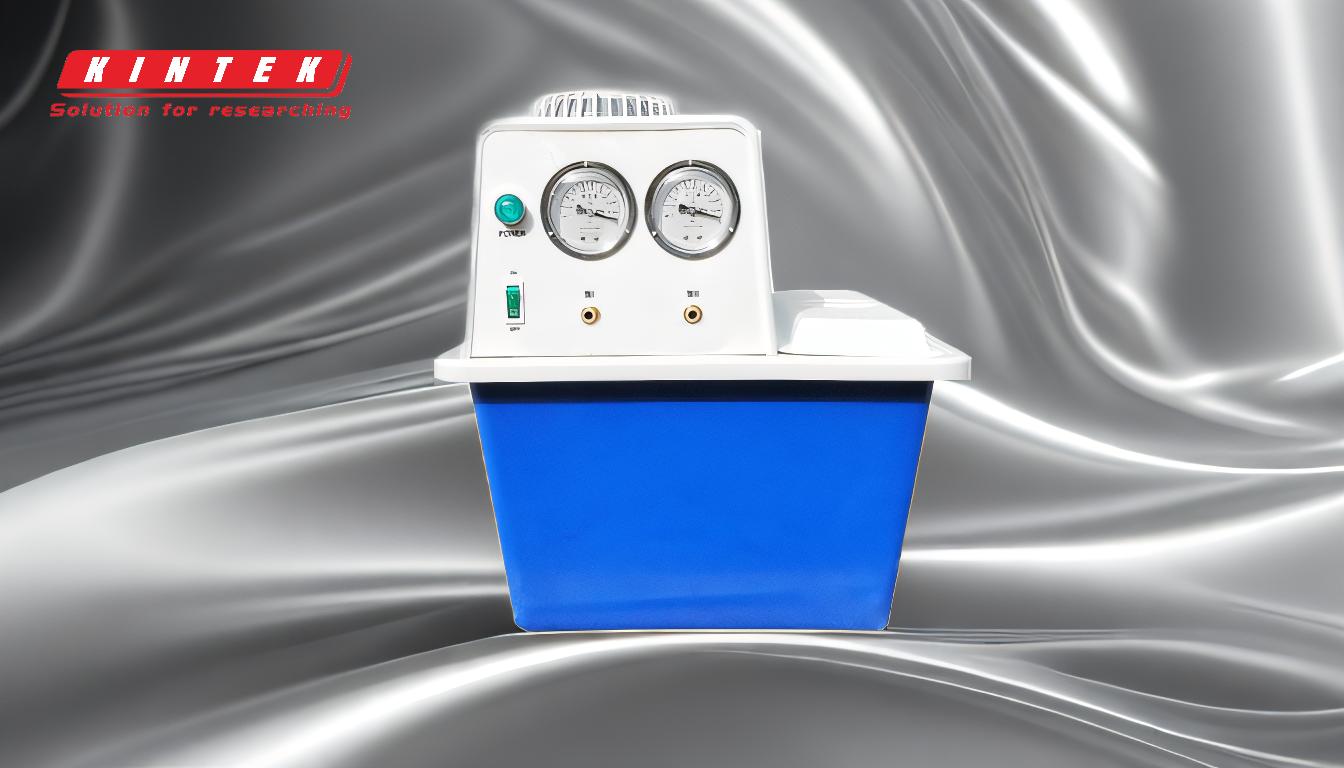A diffusion pump is a critical component in achieving high vacuum levels, typically operating in the range of 10^-3 to 10^-9 Torr. It relies on the vaporization of oil to create a high-velocity jet, which captures and removes gas molecules from the system. This process is supported by a rotary vane vacuum pump, which acts as a backing pump to maintain the necessary pressure range for the diffusion pump to function effectively. The vacuum level achieved depends on factors such as the type of oil used, the design of the pump, and the system's requirements. Diffusion pumps are widely used in applications requiring high vacuum, such as electron microscopy, vacuum coating, and semiconductor manufacturing.
Key Points Explained:

-
Operating Principle of a Diffusion Pump:
- A diffusion pump operates by vaporizing oil to create a high-velocity jet. This jet captures gas molecules and directs them toward the pump's exhaust, where they are removed by a backing pump, typically a rotary vane vacuum pump.
- The pump is activated in the pressure range of 10 to 1 micron (10^-2 to 10^-3 Torr), which is the transition zone between rough vacuum and high vacuum.
-
Vacuum Levels Achievable:
- Diffusion pumps can achieve vacuum levels ranging from 10^-3 to 10^-9 Torr, depending on the system design, oil type, and operational conditions.
- The high pressure ratio characteristic of vacuum pumps makes them suitable for multistage configurations, which further enhance their performance.
-
Role of the Backing Pump:
- A rotary vane vacuum pump is essential for maintaining the necessary pressure range for the diffusion pump to operate. It reduces the system pressure to a level where the diffusion pump can effectively take over.
- The backing pump ensures that the diffusion pump operates within its optimal range, preventing overloading and maintaining efficiency.
-
Factors Influencing Vacuum Levels:
- The type of oil used in the diffusion pump significantly impacts its performance. Oils with low vapor pressure are preferred for achieving deeper vacuum levels.
- System design, including the size and configuration of the pump, also plays a crucial role in determining the achievable vacuum level.
-
Applications of Diffusion Pumps:
- Diffusion pumps are widely used in applications requiring high vacuum, such as electron microscopy, vacuum coating, and semiconductor manufacturing.
- Their ability to achieve and maintain ultra-high vacuum levels makes them indispensable in these fields.
-
System Requirements and Solvent Considerations:
- The required vacuum level in a system depends on the solvent being used and its evaporation temperature. Modern systems regulate the vacuum depth to achieve specific outcomes, such as minimizing contamination or enhancing process efficiency.
By understanding these key points, equipment purchasers can make informed decisions about selecting and operating diffusion pumps for their specific applications. The interplay between the diffusion pump and its backing pump, along with the choice of oil and system design, are critical factors in achieving the desired vacuum levels.
Summary Table:
| Aspect | Details |
|---|---|
| Vacuum Range | 10^-3 to 10^-9 Torr |
| Operating Principle | Vaporizes oil to create a high-velocity jet, capturing and removing gas molecules. |
| Backing Pump | Rotary vane vacuum pump maintains the necessary pressure range. |
| Key Factors | Oil type, pump design, and system requirements. |
| Applications | Electron microscopy, vacuum coating, semiconductor manufacturing. |
Discover how a diffusion pump can meet your high-vacuum needs—contact our experts today!






